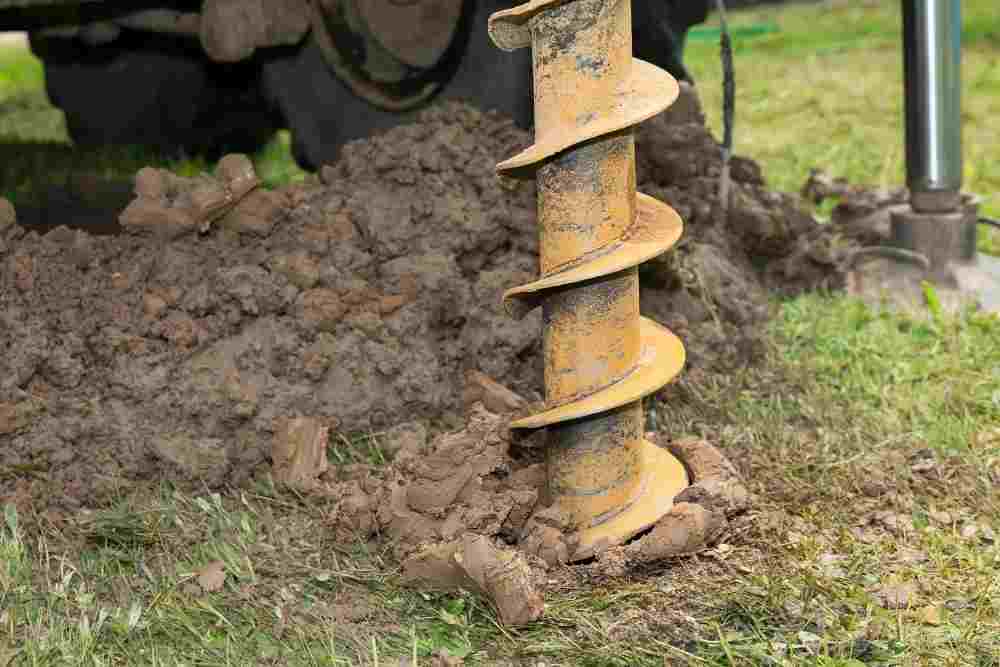You may want to install a well in your property to be able to benefit from extra water. Having one has a boatload of benefits including irrigating your property’s garden, drinking safe water etc.
It doesn’t seem as if all that was needed to dig tens of thousands of meters into the earth’s surface was a bucket, shovel, and a whole lot of elbow grease.
I’m going to refrain from listing every single component of the well-drilling procedure, as it would take an extremely long time.
Instead, we will get the ball rolling with the fundamental components.

What is a Well and What are the Benefits of Drilling One?
A well is a hole in the ground that is drilled to extract groundwater. It can be used for drinking, irrigation, or manufacturing.
Wells are common in areas with abundant groundwater, but they are also being drilled in areas with scarce water resources.
Wells have many benefits: they can provide fresh water when there is no other available source, they can help preserve land by reducing dependence on rivers and streams, and they can generate electricity.
Things to Know Before Drilling a Well
Especially expensive heavy machinery and rotary tools are put to use in the drilling process, suggesting that the driller is part of an efficient team. It’s definitely not a one-person job.
Depending on the quality of the equipment, the more smoothly the job gets done. Much of what is used to drill holes into the ground these days is a Drilling Rig.
This is a piece of equipment frequently used to bore holes into the ground.
Drilling rigs may have a variety of sizes and shapes. They can be mounted on a truck or trailer or placed on land as a permanent structure.
However, there are many prerequisite tasks to be done before actually drilling a well into the ground.
Land cost, costs, planning, and other considerations must be considered before any drilling can literally take place.
Furthermore, you have to weigh the positives and negatives of drilling a given area.
Factors that Affect the Process of Drilling a Well
Various influences can affect the duration of this process so it can differ a great deal depending on the circumstances of the scenario.
For example, the type of soil in the region will determine how long it takes. If the precipitation, thunder, and lightning continue all day, it will probably result in much longer completion.
The length of time it will take will be determined on the basis of the quality of the equipment being used and how experienced the technician is.
If the finest equipment currently available is being used by an experienced pro who has been in the business for years, it will take a much shorter time to get the job done.
How Long Does it Take to Drill a Well?
A well is completed with time and material is systematically by a machine. The time to construct a well is anywhere between two and three days, depending on the conditions will say.
Pump installation can take up to a day after the date of drilling and well can be done any time afterward.
It takes a professional worker to drill 18 wells each with a 12-inch diameter borehole within a single year, so that it’s 3 weeks on average to complete a single well.
In comparison, a homemade driller can take up to 12 months drilling a 150-meters water well borehole.
Usually, if you assemble an excellent team and have the right equipment, you could core a twelve-inch hole in one week.
In fact, you could likely complete this task much faster if all goes well. That s an average of around thirty to forty meters a day of drilling.
FAQs
How Long Does It Normally Take To Drill A Water Well?
In general, it takes about one week to complete the set process for a new water well in a difficult geographical region.
You will be required to modify the earth wherever you want to set up a water system.
How Long Does It Take To Drill A 100 Foot Water Well?
A water well takes between three and four days to be drilled on a site based on the weather and its own nature.
How Long Does It Take To Drill And Complete A Well?
Each well may be drilled between 14 and 25 days after disturbance. For a rig to mobilize, you can keep track of between 2 and 3 working days, permitting drilling to complete.
How Fast Can A Drill Dig?
Typically, a Tunnel Boring Machine (TBM) can excavate 50-60 feet in each day, at times working two or three shifts to do so.
The speed of excavation can reach 200 feet a day, and then rapidly decreases as production drops.
What Season Is Best To Drill A Well?
Since pebbly soil isn’t present, many consider drilling a well-thus challenging-to be more difficult during winter.
However, winter is the best season to complete this job, as the hard grounds prevent soil erosion in your yard.
That is because the drilling rig s tire tracks leave no substantial mud residue.
How Long Does It Take To Set Up An Oil Well?
In contrast to offshore wells, offshore wells are extremely costly and can take weeks, whereas brine wells can be set up in as few as two days and turned on within days.
Final Words
Drilling a well is not a one-person job, if you are planning for a big one. However, depending on your equipment’s and team size the time of drilling a well may vary.
In this short article, we tried to cover some important talks about that. No matter what’s your purpose are, drilling a well is always a exciting job for the professional enthusiasts.